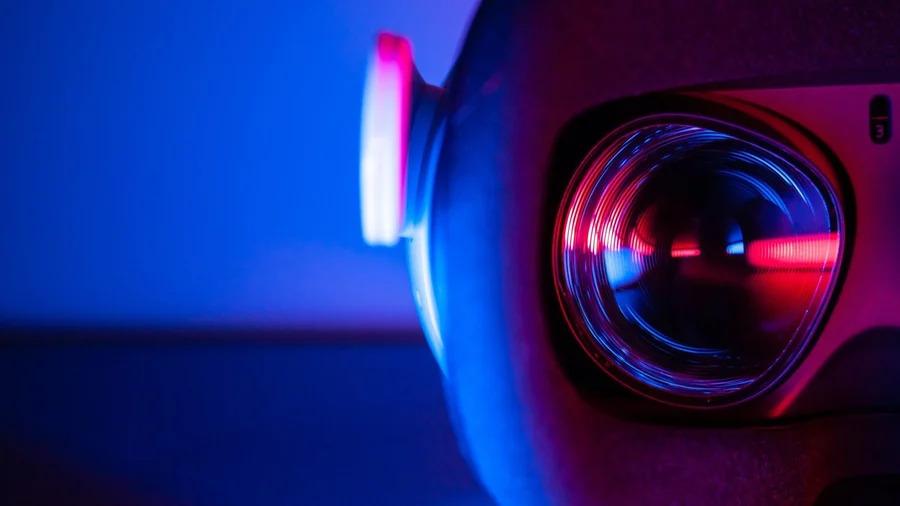How VR for Teachers Can Improve Quality of Education
By Ellen Alarilla SCR Program Manager
Published 05-03-23
Submitted by Ericsson
Originally published by Ericsson
Can technology improve access to quality education for children and youth around the world? Below, we explore the impact of Ericsson’s Connect To Learn project in the Philippines, where virtual reality training will empower teachers with new digital skills.
As someone who was born and raised in Manila, I still sometimes get surprised that it’s a place of striking contrasts: high-rise, high-tech skyscrapers built right next to lower-income communities; the sprawling campuses of international schools that sit within a stone’s throw of more humble public schools.
At Ericsson, we see the same contrast when it comes to access to digital connectivity, tools, and skills. It is easy to assume that most people have internet access. But the reality is that, according to the ITU’s latest State of Broadband report, an estimated 2.7 billion of us do not have access to that connectivity.
We kept this in mind when we were thinking about creating a virtual reality-based teacher training project for selected public-school teachers in Manila, as well as for teachers-in-training who are studying at the Philippine Normal University.
A part of Ericsson’s Connect To Learn initiative, the upskilling of teachers using VR is carried out alongside collaborators Qualcomm® Wireless Reach™ and Smart Communications Inc. (Smart), as well as the Philippine Normal University and Muntinlupa Department of Education.
Though it is a priority in government education policy, training and upskilling opportunities for teachers became limited during the pandemic, when schools were closed, and the school system had to refocus on how to reach students at home so they could continue learning. Much of the training for teachers is normally done as face-to-face sessions, sometimes in a centralized location. For teachers-in-training, the school closures left them with no chance to practice their teaching skills in real-life classrooms, which they would normally undertake in the last two years of their studies.
We are working to help overcome this by instead providing them with a virtual world where they can practice their teaching skills, wherever they might be, and whenever it would be convenient. By putting on a VR headset, the teachers will be transported to a virtual classroom with virtual students. They can then practice their classroom management skills, as well as how to integrate ICT into the lessons in order to make them more student-focused.
For example, they will be asked within the training module to physically arrange the classroom to create what they think will be a more conducive learning space, and to select ICT-based tools such as online videos, quizzes, or games to help illustrate the key concepts of the lessons that they will practice delivering. The training modules are designed to give the teachers feedback on how effective their choices were. VR for teacher training has been used in a Connect To Learn initiative previously, but this is the first time it will be deployed in the Philippines.
“No education system could exceed the quality of its teachers,” Dr. Bert Tuga, the President of the Philippine Normal University shared when we met him and the other project partners in September. “There’s a huge need to integrate ICT in teaching, and we see great potential to use VR as a tool for developing competencies that teachers might not otherwise be able to develop in a traditional classroom.”
We are hopeful that VR will readily be embraced by the teachers as a training tool: when we showed a demo unit to one of the professors at the Philippine Normal University, she breezed through it and used the headset and controllers with ease. She thought it was quite interesting and easy to master. But we knew this question wouldn’t be far behind: “How can the students use it too, in the public schools? They’re going to be so thrilled to use something like this.”
This deep care for students was evident as we made our way to the two public high schools for a quick visit the day after our meeting with the project collaborators. It was a big school, with modern outdoor facilities and a good number of classrooms. The principal explained that they saw a surge in enrolment during the pandemic, as smaller private schools closed, and parents’ livelihoods were impacted.
“From initially having 4,500 students for our four senior high school levels, now we have 9,000,” he shared. “We don’t have enough teachers, although hiring is ongoing. We have enough classrooms, but we want to make sure our students are comfortable, so we’re trying to get some more furniture as well.”
According to the UNESCO Institute for Statistics, 69 million teachers need to be recruited worldwide in order to achieve the UN Sustainable Development Goal (SDG) 4, ‘Quality education’, which aims to ensure inclusive and equitable quality education, and promote lifelong learning opportunities for all. Connect To Learn supports this ambition by using technology to accelerate access to quality education. As a cross-discipline public and private sector collaboration, it also reflects the importance of partnerships for making progress towards the SDGs, as outlined by SDG 17.

While recruiting enough teachers to manage the expanding number of students remains a challenge, the school we visited has managed to improve the tools at their disposal. The principal was happy with improvements they have made to their computer laboratory that was recently furnished with laptops. “We teach students basic computer skills – they’re working on building sample webpages at the moment.” He motioned to the old, tower-type desktops that they had recently replaced. “Can you imagine that we were still using those until recently? They were still working, but were so slow – these days, students need to learn on more modern devices. Having ICT skills is almost considered to be a basic life skill, and we want to make sure our students have these skills.”
In the next school we visited, it was another story of contrasts: While they were smaller than the first school, had fewer students and not as many facilities, they did boast a modern robotics lab, and a student team that had recently won local robotics competitions. “We’re a science high school, so we select students based on merit,” the principal explained. “We’re fortunate to have had the support from the government to build a robotics lab, which is open to students who have the interest and the aptitude for robotics.” He said that their students mastered robotics quite quickly. “They were already invited to other countries to compete – it’s an experience that they will likely remember forever.” Before we left, two teachers had already volunteered to help design and test the VR teacher training modules, as they were keen to see how it would work.
We stopped to briefly observe some students enjoying dance practice at their school gym, and our customer partner for the project, Smart, commented on how it was so good to see the students back on campus. “We have been helping schools to adapt to the pandemic through our crisis resilient education programs that support distance learning, and it was so sad to see the schools deserted,” Stephanie Orlino, AVP and Head of Stakeholder Management, shared. “Now that they’re back, we hope that our joint project will inspire the teachers to use more ICT tools to engage their students and ensure that no learner is left behind.”
We know we’ll be back in the next few months with the VR units to start training the teachers, and we’re very interested to see how this could make a difference for both the teachers and the students.
However different these two schools might be in terms of facilities and size, their principals were aligned on one thing: ICT has great potential to improve the students’ learning experiences, and ultimately, change their lives for the better.
Read more
Learn more about VR and immersive technology

Ericsson
Ericsson
Ericsson is one of the leading providers of Information and Communication Technology (ICT) to service providers. We enable the full value of connectivity by creating game-changing technology and services that are easy to use, adopt, and scale, making our customers successful in a fully connected world.
Our comprehensive portfolio ranges across Networks, Digital Services, Managed Services and Emerging Business; powered by 5G and IoT platforms.
More from Ericsson

